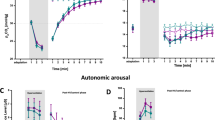Abstract
This theoretical model for the management of violence relies on the notion that there are fundamentally only two kinds of prison violence—provoked and unprovoked—and that all violence is caused by the influence of some fear-causing agent which triggers the autonomic nervous system's Fight or Flight Response (FFR) which in turn causes the release of FFR chemicals to create and enable an action potential for violence in the actor. Provoked violence is an act of violence which occurs in response to an FFR instigated by some external, independent contemporaneous, real or imagined fear causing agent. Treating provoked violence must include suppressing the production of an excess of FFR stimulant chemicals, which at the same time employing psychodynamic therapy to modify the negative behavior learned from a lifetime of excessive responses to FFR chemical releases. Unprovoked violence is the result of an actor's addiction to FFR chemicals. This addiction leads the actor to experience an apperceptive compulsion to engage in thrill seeking as a method of exposing himself to fear causing agents that are calculated to cause the release of FFR chemicals. In order to treat unprovoked violence you must treat both the chemical addiction and the negative pattern of behavior which was learned to support the habit of self-triggering an FFR. Thus any successful treatment of violence must employ both energetic and psychodynamic models for development of fear management strategies.
Similar content being viewed by others

References
The literature on violence and on the endocrine system's ability to activate and enable an action potential for violence through the secretion of FFR chemicals includes
Akers, R. (1994). Criminological Theories: Introduction and Evaluation (pp. 76–83). Los Angeles: Roxbury Publishing Company.
Bernard, T.J. (1990). Angry aggression among the “Truly Disadvantaged.” Criminology, 28:1. 73–96.
Bohm, R. (1997). A Primer on Crime and Deliquency (pp. 40–45). London: Wadsworth Publishing Company.
Brain, P.F. (1993). Hormonal aspects of aggression and violence. In Albert J. Reiss and Jeffrey Roth (Eds.), Understanding and Preventing Violence (pp. 173–244). Washington, D.C.: National Academy Press.
Brennan, P.A., Mednick, S.A. and Volavaka, J. (1995). Biological factors in crime. In J.Q. Wilson and J. Patersilia (Eds.), Crime (pp. 65–90). Institute of Contemporary Studies.
Curran, D.J. and Renzetti, C.M. (1994). Theories of Crime. Boston: Allyn and Bacon.
Goldman, D., Lappalaninen, J. and Ozaki, N. (1996). Direct analysis of candidate genes in impulsive behaviors. In Gregory R. Bock and James A. Goode (Eds.), Genetics of Criminal and Antisocial Behavior (pp. 139–154). London: John Wiley & Sons Ltd. (Ciba Foundation Symposium 194).
Lewis, O.L. (1995). Development of the symptom of violence. In Melvin Lewis (Ed.), Child and Adolescent Psychiatry: A Comprehensive Textbook (pp. 334–344). Baltimore: Williams & Wilkins.
Lewis, T., Amini, F. and Lannon, R. (2000). A General Theory of Love. New York: Random House.
Mednick, S.A., Pollock, V., Volavka, J. and Gabrielli, W.F. (1982). Biology and violence. In Marvin E. Wolfgang and Neil Alana Weiner (Eds.), Criminal Violence. Beverly Hills, Calif.: Sage.
Mednick, S.A. (1977). A biosocial theory of the learning of law-abiding behavior. In S.A. Mednick and K.O. Christiansen (Eds.), Biological Bases of Criminal Behavior. New York: Gardner Press, Inc.
Pert, C.B. (1997). Molecules of Emotion: Why You Feel the Way You Do. New York: Simon & Schuster.
Silberman, C.E. (1978). Criminal Violence, Criminal Justice. New York: Random House.
Shah, S.A. and Roth, L.H. (1974). Biological and psychophysiological factors in criminality. In D. Glasser (Ed.), Handbook of Criminology. Chicago: Rand McNally.
Volavka, J. (1995). Neurobiology of Violence. Washington, D.C.: American Psychiatric Press, Inc.
Vold, G.B., Bernard, T.J. and Snipes, J.B. (1988). Theoretical Criminology (4th ed., pp. 68–87). New York: Oxford University Press.
Rights and permissions
About this article
Cite this article
Hassine, V. How Do I Treat My Hungry Lion: A Model for Violence Management in Prison. Journal of Applied Psychoanalytic Studies 5, 65–80 (2003). https://doi.org/10.1023/A:1021003118858
Issue Date:
DOI: https://doi.org/10.1023/A:1021003118858



